BIODIVERSITY
The Mukhuri route, which starts from the village of Mukhuri and leads to the Khobistskhali Gorge, is rich with a variety of local flora, plants, timber, alpine or sub-alpine belt, and vegetation. Shrubs, mixed-leaved, beech-coniferous, evergreen, and broad-leaved forests, and alpine and sub-alpine plants are typical for the area of Samegrelo mountain forests. The border of the mountain forests typical for the flora of Samegrelo-Zemo Svaneti begins near the village of Mukhuri and includes the Khobistskhali Basin with its tributaries. The valley is narrow and deep, with high level of humidity. The bottom of the valley is up to 300 meters above sea level, and the height of the single slope of the valley can exceed even 1000 meters. The forest here is characterized by relict (since ancient times) evergreen undergrowth.
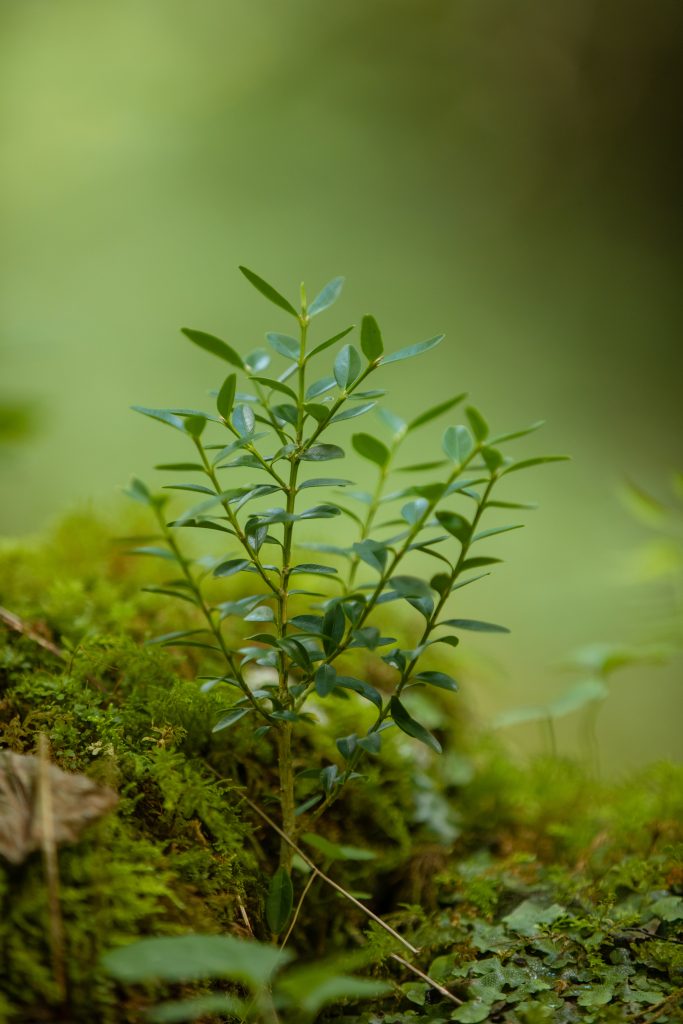
Colchis Boxwood (Buxsus colchica)
A relict plant of the red list, it is abundantly found in the Khobistskhali Gorge, both in the form of dried pieces and new shoots.
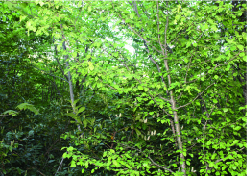
Cherry Laurel (Prunus laurocerassus)
The Laurel is an evergreen brushwood species and is found throughout the valley, mainly in beech forests. It grows as a bush and sometimes as a tree, up to 7-8 m high. It blooms in April and May.
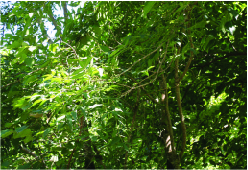
European Ash (Fraxinus excelsior)
Ash can be found in the entire forested valley of Khobistskhali Gorge, up to 800 m above sea level. It is mixed with other deciduous trees. It tolerates moisture and dryness well and blooms in March-April. The fruit ripens in June or July.
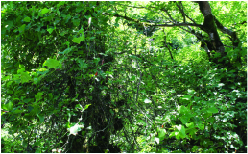
Chinese Sarsaparilla (Smilax excelsa)
Sarsaparilla is an evergreen plant and can be found throughout the Gorge. It is a creeper and climbs very high on trees. The stems are long, creeping, and covered with thorns. Two whiskers sit near the stalk, with which the thorn is attached to the support. It blooms in Spring.

Common Elderberry (Sambucus nigra)
Elderberry is a medicinal plant that is used for various purposes, mainly for treating gastrointestinal diseases. It can be found in the lower and middle belts of the mountain in the Khobistskhali Gorge, in the beech forest, and the hornbeam forest. Elderberry blooms in May and June.
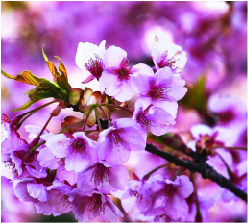
Japanese Sakura
In the Spring, especially in May, four Japanese Sakura trees capture the attention of visitors. They bloom profusely for 2 weeks in the second half of April and May. It is also worthwhile mentioning, that an alley of Colchic Boxwood accompanies the central entrance of the park, representing the central alley of the city.
Azalea (Rhododendron luteum)
Azalea is widespread both in the plains and massively in the subalpine forest in the Khobistskhali Gorge. Blossom begins before leaf emergence and lasts for a long time.
Colchis Ivy (Hedera colchica)
Colchic Ivy is a creeping plant found throughout the Gorge. It sometimes climbs very high on trees and attaches itself with additional roots. Although, it can also be found attached to the ground. It blooms in September-October.
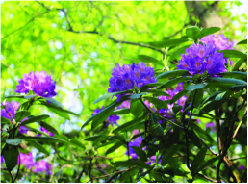
Pontic Azalea (Rhododendron ponticum)
A relict, evergreen Brushwood species. It can be found in the mountains up to 1800 m. above sea level. It follows the Khobistskhali Gorge and is characterized by frequent encounters. Azalea blooms in May and, if the weather is warm, a second bloom is in October.
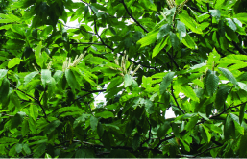
Chestnut (Castanea sativa)
It is a priceless plant on the red list, which is actively used in food production. It is widely common in the Khobistskhali Valley. It lives up to five hundred years. Chestnuts ripen in October.
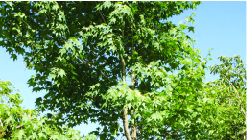
Cappadocian Maple (Acer cappadocicum)
Maple is found throughout the valley, in relatively high humidity and cool areas. It blooms in May and has greenish, small flowers that ripen in August and September.
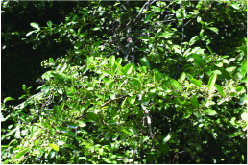
Firethorn (Pyracantha coccinea)
Firethorn is evergreen and can be found throughout the entire Gorge. It loves light and thrives along the river and forest edges. Firethorn blooms in May-June.
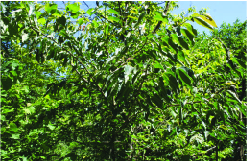
Persimmon (Diospyros lotos)
Persimmons are often found throughout the entire Gorge in moist areas, along with wing-nut trees, hornbeam, and oak. It blooms in May. The fruit is eaten only after frost when it softens and acquires sweetness.
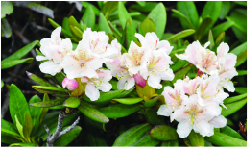
Caucasian Evergreen Azalea (Rhododendron caucasicum)
Evergreen Azalea is a rare mountain evergreen plant. It is frequent in the surrounding areas of Tobavarchkhili, where on the Northern slopes of the high mountain it forms extensive groves next to Alpine meadows. Azalea blossoms in June-July, and ripens in September.
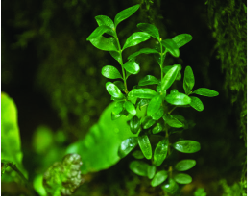
Yew
In the valley, there is a relict plant of various sizes- called Yew, which is included in the Georgian and global red list. Yew is highly decorative, and it also has very valuable sapwood, which used to be actively used in the furniture industry.
Bladdernuts (Staphylea colchica)
Bladdernut is an endemic Georgian plant and its fruits are used as food, which are collected before blossoming and are pickled. It is found throughout the Gorge in the forests of the lower and middle belt of the mountain. Bladdernut is a shrub or tree. It blooms in April and May.
Black Locust (Robinia pseudoakacia)
In the vicinity of the village, former collective industrial forests can be found, which is where Black Locust resides in large quantities. The plant is distinguished by its active blossom in May and creates a pleasant fragrance all around. It is is also a food base for bees.
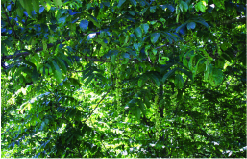
Caucasian Wingnut (Pterocarya fraxinifolia)
Wingnut is a relic, a red-listed, valuable plant. It is found here and there in the Khobistskhali Gorge, up to 350 meters above the Sea level. It blooms in early Spring, in March and April.
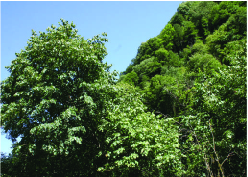
Caucasian Lime-tree (Tilia begonifolia)
Lime can be found throughout the valley, mostly in beech and hornbeam forests. Lives four hundred to six hundred years. It blooms in June.
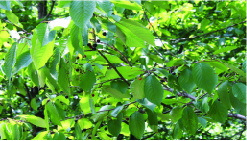
Wild Cherry (Cerasus silvestris)
Wild Cherry can be found here and there, scattered throughout the whole Gorge. It is a 25-35 m tall tree. It blooms in April and May and ripens in June.

Caucasian Jasmine (Philadelphus caucasicus)
Caucasian Jasmine can be found in the valley before reaching the Ghunji waterfall on the forest edges of the front slopes of the mountain. It blooms in May and June.
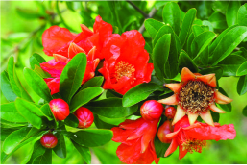
Pomegranate (Punica granatum)
Low pomegranate bushes can be found in the vicinity of Mukhuri village, near the village. It blooms in May. The fruit ripens fully in late Autumn.
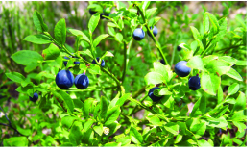
Blueberry (Vaccinium myrtillus)
Blueberries thrive in the Khobistskhali Gorge in the Subalpine belt, but can also be found higher up, in the Caucasian Rhododendron shrublands (places where Caucasian Rhododendron grows). Blueberries bloom in June. The fruit is a berry and ripens in July-August and is sweet, slightly sour, and bluish-black.
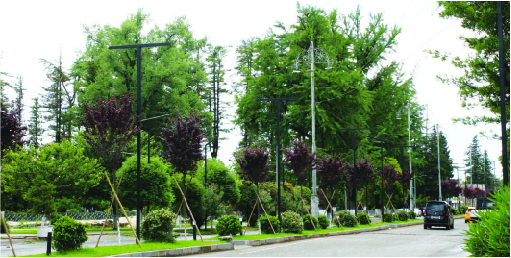
Ginkgo
A rare and IUCN (International Union for Conservation of Nature) red listed species; the two-spotted ginkgo causes curiosity in the city. There are more than 20 beautiful Ginkgo trees of different ages and sizes in the park and its surroundings. Together with the palmy maples, they create an autumnal aspect.
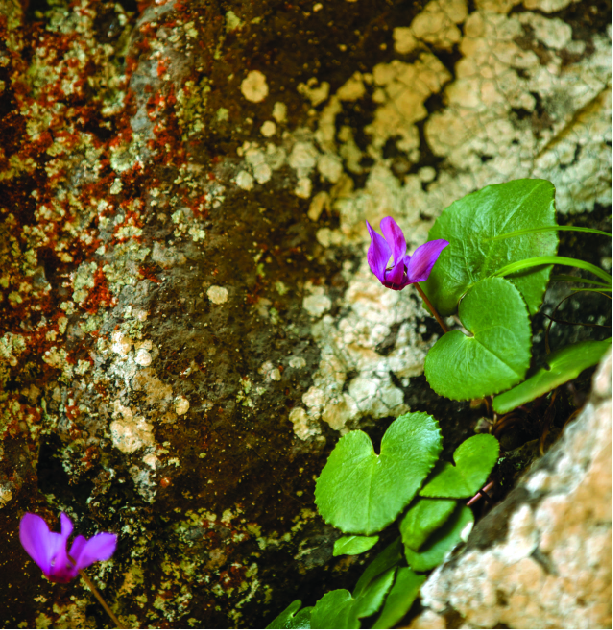
Colchic Cyclamen
Colchic Cyclamen is red list plant, which blossoms in August and can be found in the vicinity of the Ghunji Waterfall. It is worthwhile highlighting, that Colchic Cyclamen is an endemic variety to the local flora. In addition, it is also possible to see the shoots of self-sown young saplings of Colchic Boxwood from the village of Mukhuri, especially around Shurubumu.
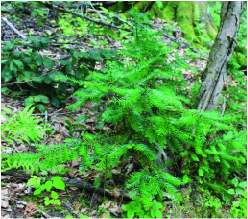
English Yew (Taxus baccata)
A relict, red-list, species with precious sapwood. It can be found in the Khobistskhali Gorge, especially near the banks of the river and in the depths of the forest. It lives for a long time, about six hundred to eight hundred years.
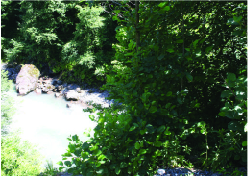
Alder (Alnus barbata)
Alder can be found throughout the whole Gorge, mostly on the banks of the river. It grows rapidly under the conditions of sufficient exposure to light and moisture and lives up to two hundred years. Its greenish flowers bloom in early Spring.
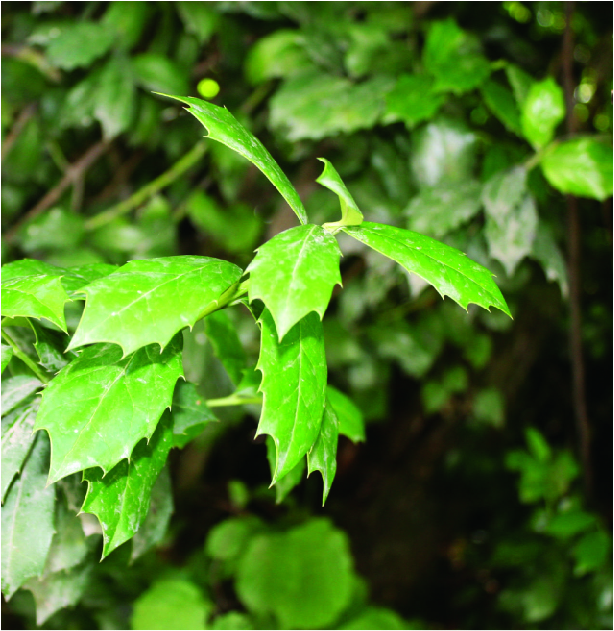
Colchican Holly (Ilex colchica)
Holly is a relict, evergreen plant. It is found throughout the Gorge, mostly in deciduous and rarely coniferous forests of the lower and middle belt of the mountain. Holly is a heavily branched bush from the base and blooms early Summer.
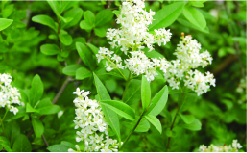
Common Privet (Ligustrum vulgare)
With a height of 1-3 meters, the bush is found throughout the Gorge within the range of up to 1200 m above sea level. It thrives in forest edges and thickets. In Autumn, and sometimes even before Winter, the leaves still remain on the bush, and then they all fall at the same time. The fruit is a very good food for birds.
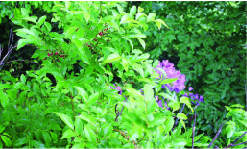
Cowberry (Vaccinium vitis-idaea)
Cowberry is common in high mountains and forests in the Khobistskhali Gorge. It is a small, evergreen bush, with branches lying on the ground or standing up. It blossoms in May-June and ripens in August-September.
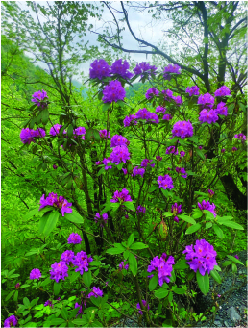
Pontic Rhododendron
The massive flowering of Pontic Rhododendron gives the valley a special beauty, which starts from the second half of April and lasts until the first half of May. At this time, it is possible to see light and dark-pink flowers gathered in groups throughout the Gorge.
Butcher’s Broom (Ruscus colchicus)
Butcher’s Broom is an endemic evergreen plant. It has no leaves and the modified stem looks like a leaf. It is found throughout the Gorge in the form of small bushes in shadowy moist places. It blooms in Spring and Autumn and ripens from the end of Summer.
Cranberrybush (Viburnum opulus)
Cranberrybush is found throughout the Khobistskali Gorge in the forest of the lower and middle belt of the mountain, on the edge of the forest, and in the thicket. It turns red when ripe at the end of Summer, from August.

